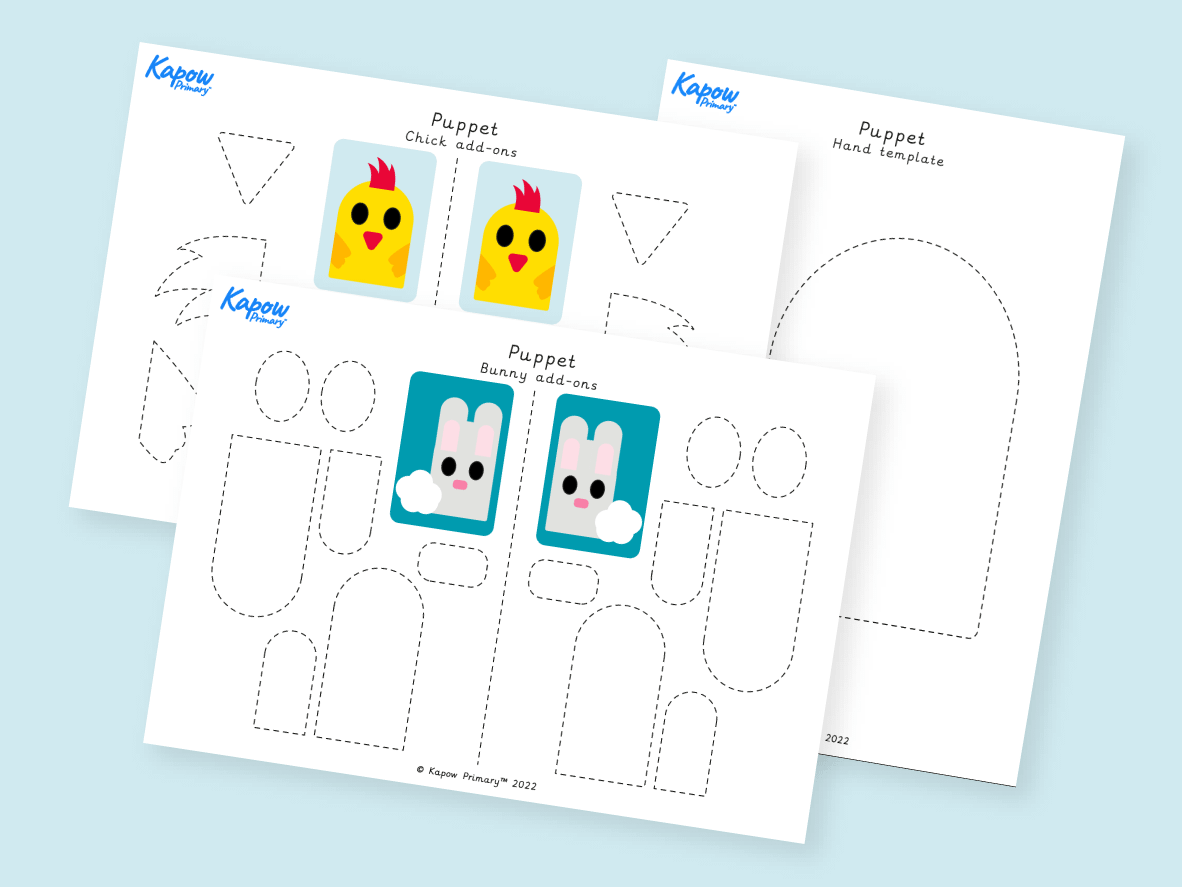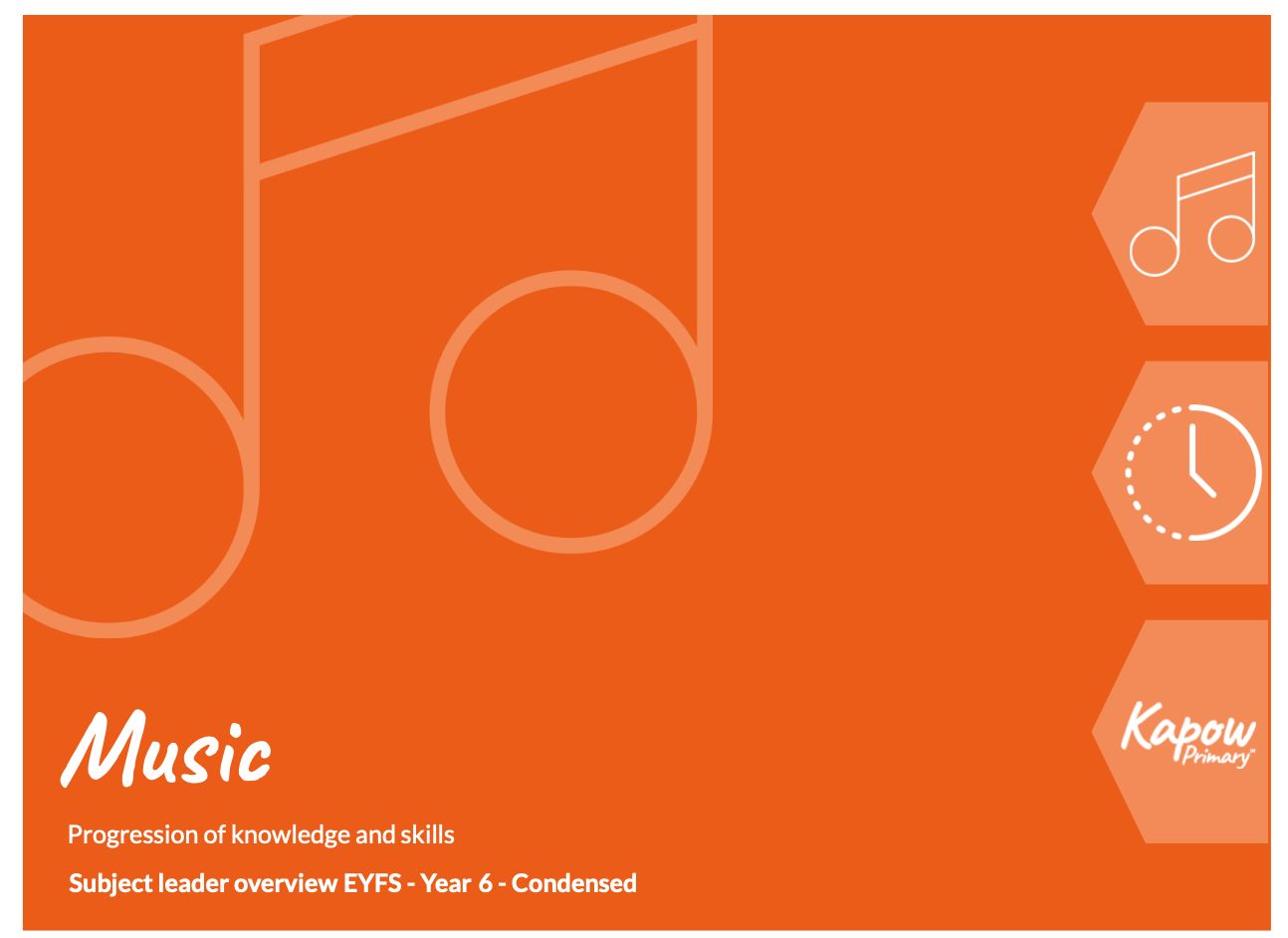
Please note this document will be updated on 19.08.24 to reflect changes to our long-term plan. See the Music: Long-term plan — condensed to find out more about these changes.
This document is to be used alongside our Music: Long-term plan — condensed version.
It shows the progression in skills across the Music scheme of work in the following strands: Listening, Composing, Performing and the History of Music (KS2). It covers:
EYFS (Reception) Music lesson plans
Key Stage 1 Music lesson plans
Lower Key Stage 2 lesson plans
Upper Key Stage 2 lesson plans
There is a progression of knowledge document included for our Inter-related dimensions of music strand.
Please note that, whilst we have tried to get full coverage, the skills and knowledge covered in our condensed curriculum is not the full range of skills and knowledge, nor in the same depth you would find if following our standard Music: Long-term plan. This curriculum, does, however, ensure national curriculum coverage.
If you have enough time, we would recommend using our standard Music: Long-term plan and accompanying Progression of skills and knowledge document
If your school is following our Long-term plan — mixed-age for music, then please see the accompanying Progression of skills and knowledge — mixed-age.
If you would like to see the skills and knowledge covered in each unit, then please see our Music: Key skills and knowledge by unit.
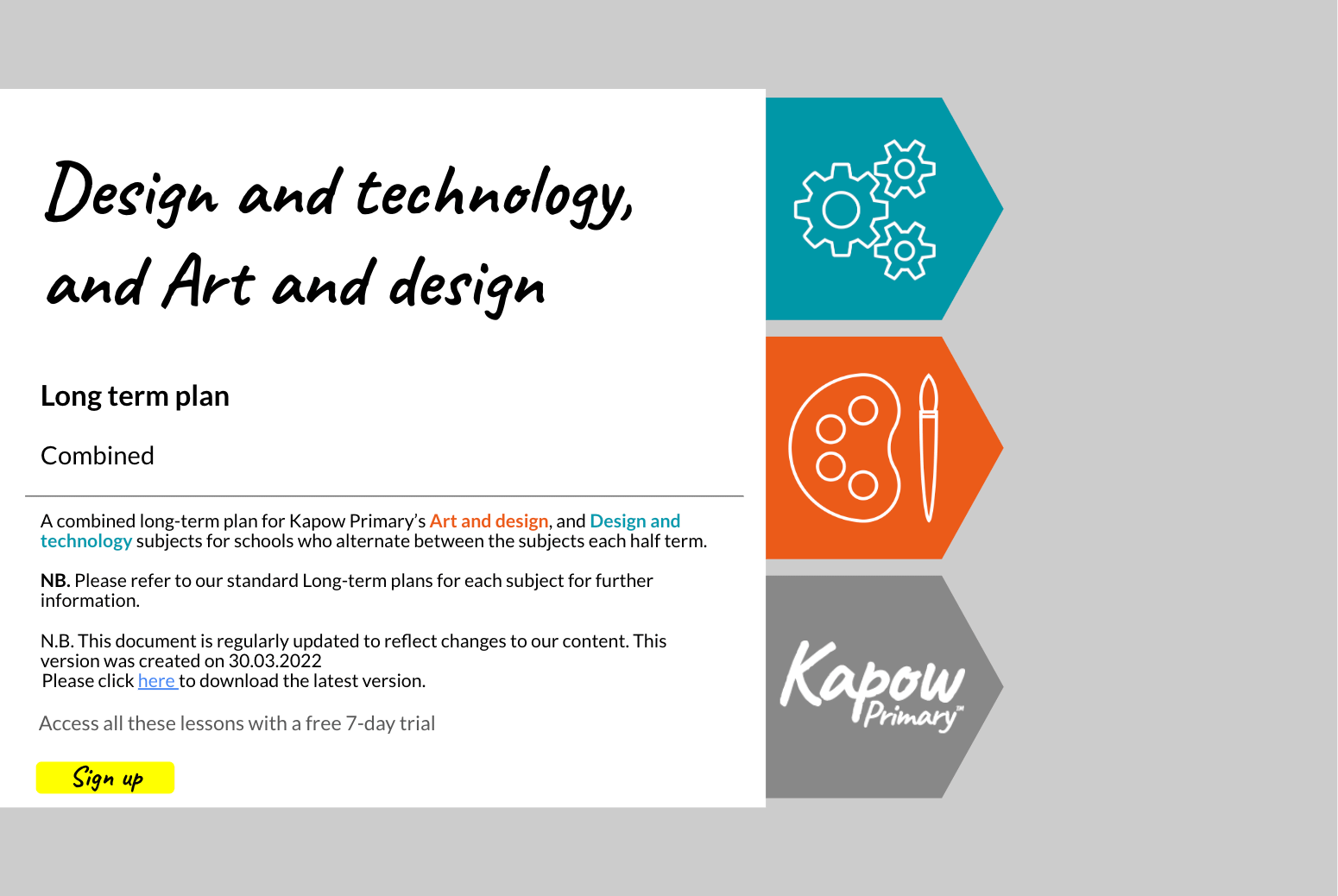
Here is a version of our Art and design (revised scheme) and Design and technology long-term planning for those schools that alternate between the subjects every half term.
Please note that schools must subscribe to both subjects to access all the units outlined in this plan.
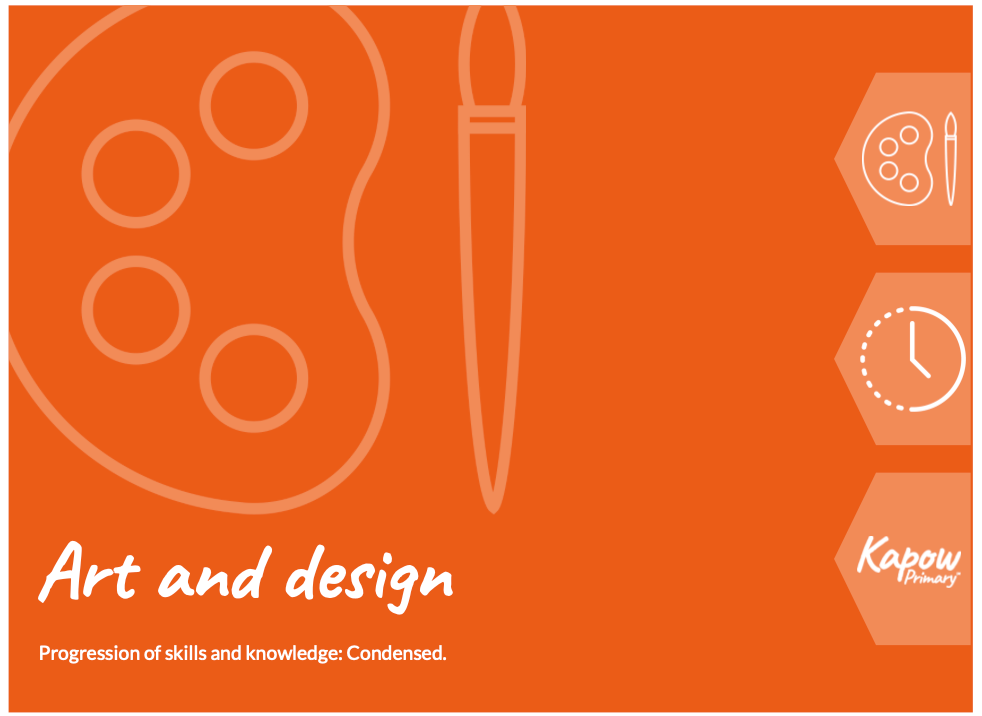
Perfect for schools with limited teaching time, this version of our Progression of skills and knowledge document accompanies our Art and design: Revised scheme long-term plan – condensed version.

This document is for schools following our D&T: Long-term plan —mixed-age version. It gives an overview of the skills and knowledge covered in each mixed-age year group and cycle and how these skills develop throughout the Design and technology scheme of work.
It shows how skills and knowledge develop in each of our D&T Key areas: Structures, Mechanisms/mechanical structures, Electrical systems (KS2), Cooking and nutrition, Textiles and Digital world.
If you are following our Long-term plan — condensed, then please see the D&T Progression of skills and knowledge — condensed.
If you are following our standard Long-term plan, please use: D&T Progression of skills and knowledge.
If you also subscribe to Art and are following our Art and DT Long-term plan, please use: Art and DT Progression of skills and knowledge.

This document is for those schools who alternate teaching between Design and technology and our Art and design (revised scheme of work) and follow our Art and DT: Long-term plan in order to achieve this. It outlines the skills and knowledge progression for both subjects in one document.
Please note that schools must subscribe to both subjects to have access to all the units referenced in this document.
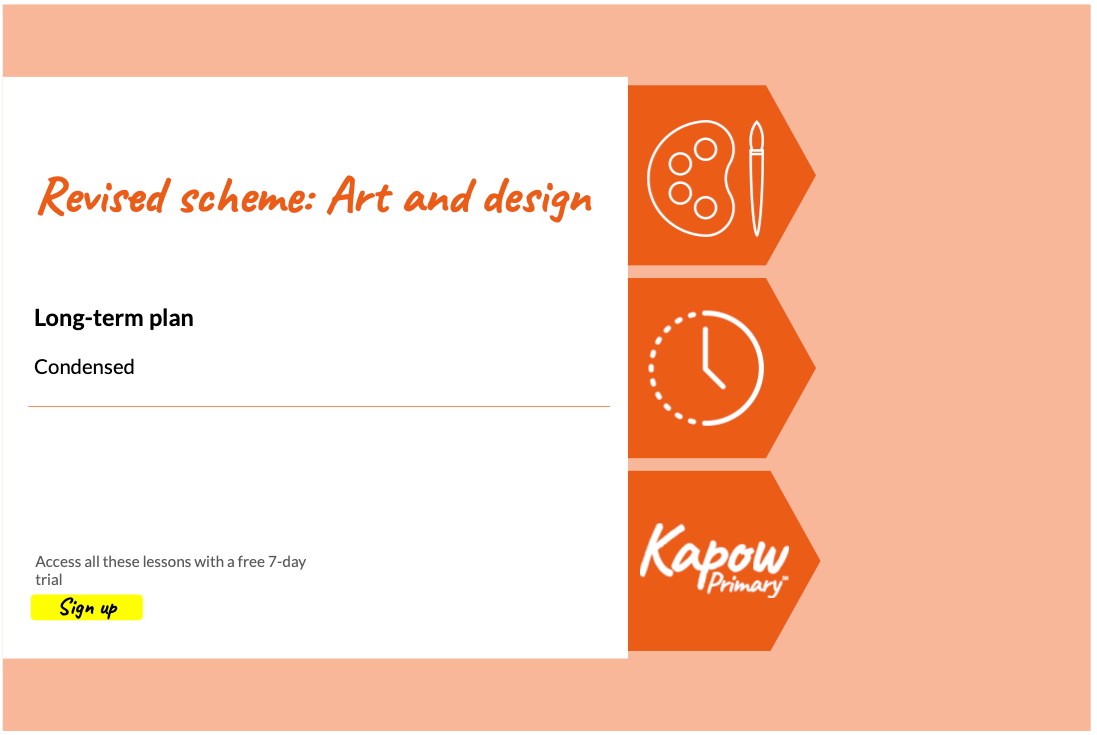
This document outlines Kapow’s condensed Art and Design curriculum for the entire school, and contains important information for teachers, subject coordinators, school leaders, and outside bodies. The document explains the structure and organisation of the curriculum, which covers four key areas for each year group: drawing; painting and mixed media; sculpture and 3D; and craft and design.
The Progression of skills and knowledge — condensed document accompanies this long-term plan.
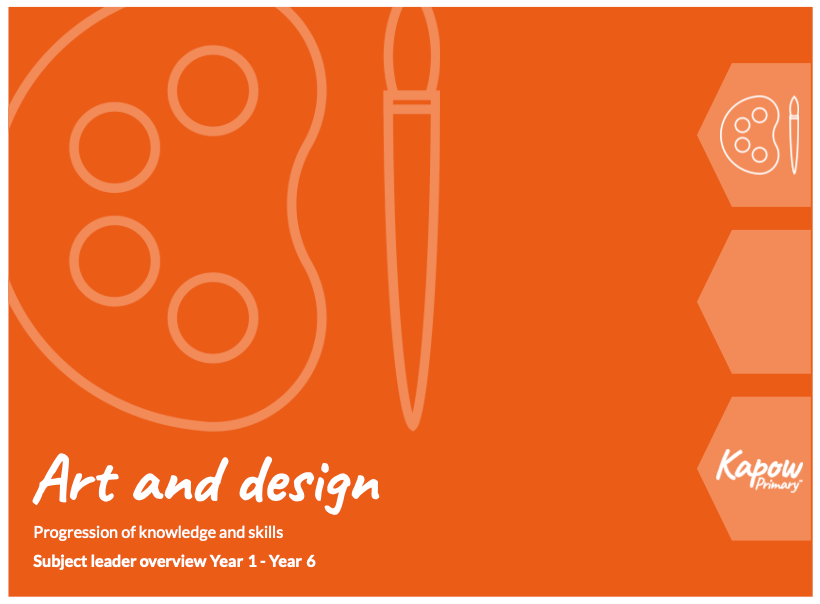
An overview of the knowledge and skills covered in each year group and strand across the units of lessons in our Art and design scheme of work. It shows how knowledge and skills progress in the key areas: Drawing, painting and mixed media, Sculpture and 3D and Craft and design and in the Formal elements of Art.
This document is for those who follow our revised Art and design scheme standard Art and design: Long-term plan.
If you follow our Long-term plan – condensed then please see the corresponding Progression of skills and knowledge – condensed
If you subscribe to both subjects and follow our alternating D&T and Art long-term plan, then please see the corresponding D&T and Art: Progression of skills and knowledge
If you follow our Long-term plan — mixed-age then please see the corresponding Progression of skills and knowledge — mixed-age version.
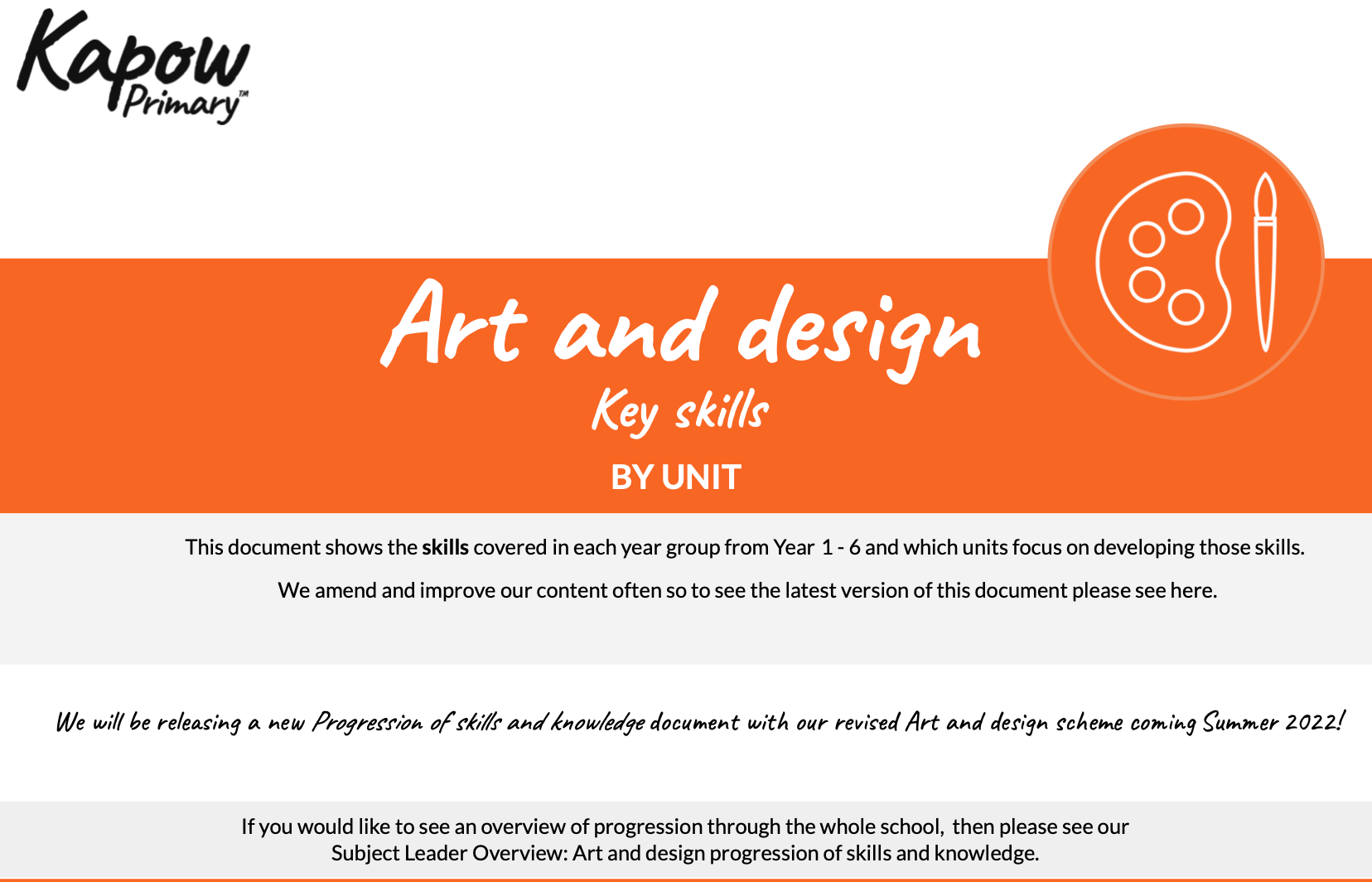
This skills overview is suitable for use with the original Kapow Primary Art and design scheme. We recommend that schools no longer use this scheme and transition to our revised Art scheme.
This overview shows the key skills covered across each year group and identifies which units give coverage of each of these skills.
If you are following our Long-term plan: Condensed, there are some skills and artists that are not covered. These skills are highlighted on the document with the ✦ symbol.
See our revised Art and design scheme here.
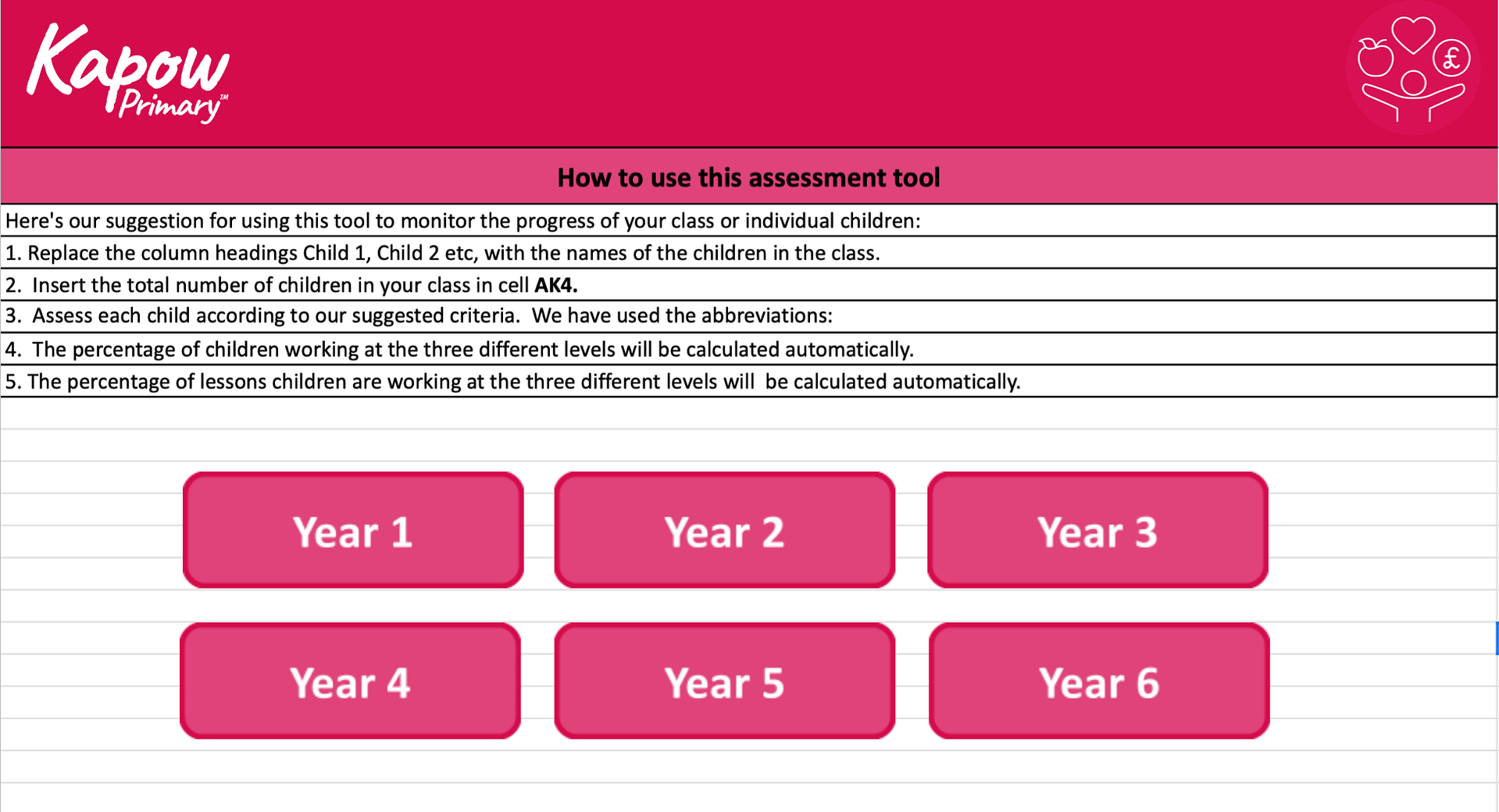
A downloadable spreadsheet that can be used to record teacher assessments from the lesson. The formulae then show what percentage of the lessons taught the child has been working towards, secure understanding or greater depth, allowing you to check on their achievements in the subject at any point in the school year, such as when reporting to parents. It can also be used to identify areas where the whole class may need to revisit learning.









